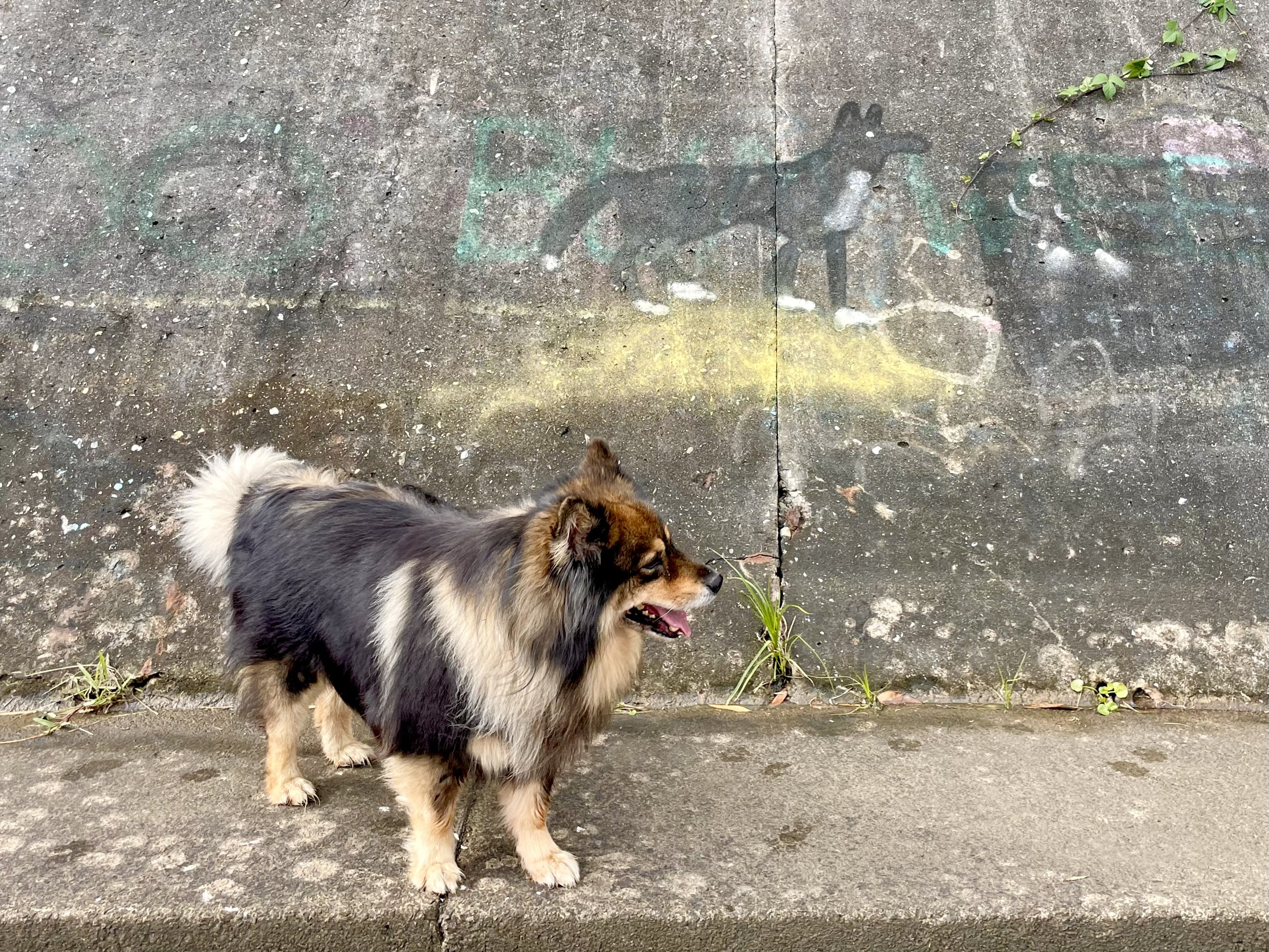Styx Creek
(from Antinomicity)
The point at which the riverrun creek transitions into a dry, walkable stormwater drain is located beneath a rail bridge that carries both freight and passenger trains (but not coal, which travels on the other side of the TAFE for a brief moment before diverting to the highfields). My dog is comfortable with the rumble now as the trains pass overhead, as we trespass the drain’s broad, curved trajectories from one side of the city to the other. We don’t start here, though. Our walk commences two kilometres back, two of the over five hundred kilometres of drain network across the city, expanding and contracting to varying degrees of width. The stretch we walk spans twenty metres across, but it narrows to only three or four metres as it slinks into the heights of the suburbs. Aside from a couple of bridges, the drain is completely open air, seated some three metres below ground level with steep concrete walls, appearing somewhat like a baking tray or a marble run.
I first guided my dog down here after reading a book by a local author about his own walks through the drain with his dog. The book was written in the style of the English naturalists, the walking phenomenologists who made it their mission and their pleasure to observe the area in which they lived in service of folk scientific inquiry, learning the names of the plants, the variety of birds flitting about, recognising seasonal patterns. There is a section in the book where the author wanders beneath a fold of torn metal fencing into the disused gasworks that runs alongside the storm-water drain, and he says that if asked by any remnant security or council workers why he was trespassing, he would simply say that his dog ran through the fence and that he was just going in to retrieve him. That was enough of a license for me to do the same.
Putting aside the joy of watching my dog run free through the length of drain as far as my vision carries, in which we have never in my years of doing this come across another dog down here, and only very occasionally another human traveller, my favourite part of the trek is a length of some five hundred metres that curves out of view from the nearest bridge or roadway, not visible from the rail line either, so that for some ten minutes of walking it is as if I am the only human on the planet. It is a solipsist’s dream - on one side is the abandoned gasworks, on the other an abandoned fuel depot, both vacant of any activity, and growing along the ridge of the walls of the drain are these immense golden willows that hang low their branches and rustle like a nineteen-fifties mesh coin purse that softly pleat coins of jangled sunlight. Sometimes I lean back and watch the trees repeat their breeze-jostled sequence for twenty minutes while my dog finds a warm patch of ground to embrace.
One early morning some weeks back, beneath just this sort of gentle acceleration of sunlight, my dog and I clambered up the concrete walls of the drain at a point where a minor stormwater course joins up with the central passage and found ourselves on a raised spit of field that backs onto the old gasworks. Not only backs onto but leads into, as a nearby security gate is wide open within the surrounding mesh fence line. Until the nineteen-eighties, the gasworks turned coal, through an oxidation process, into gas for the city. Now it sits vacant, a half dozen silos casting shadows over bullgrass and dust like a batch of giant, discarded sundials. Most of the stairwells attached to the side of the silos are wholly rusted away, but one remains intact, enough so that my dog and I can ascend to the top without any hassle.


